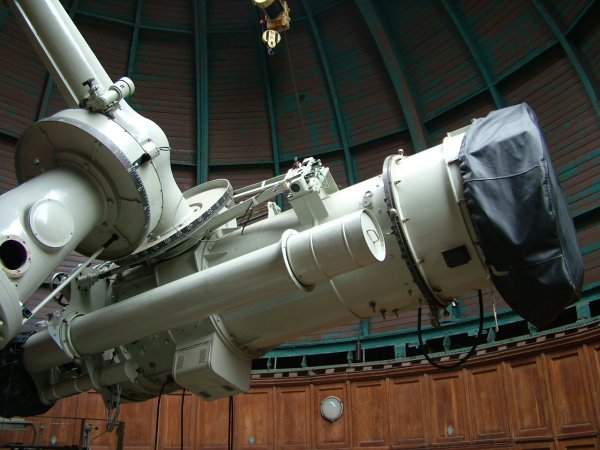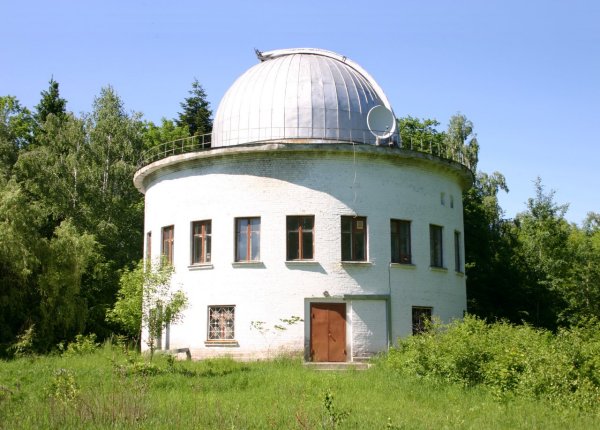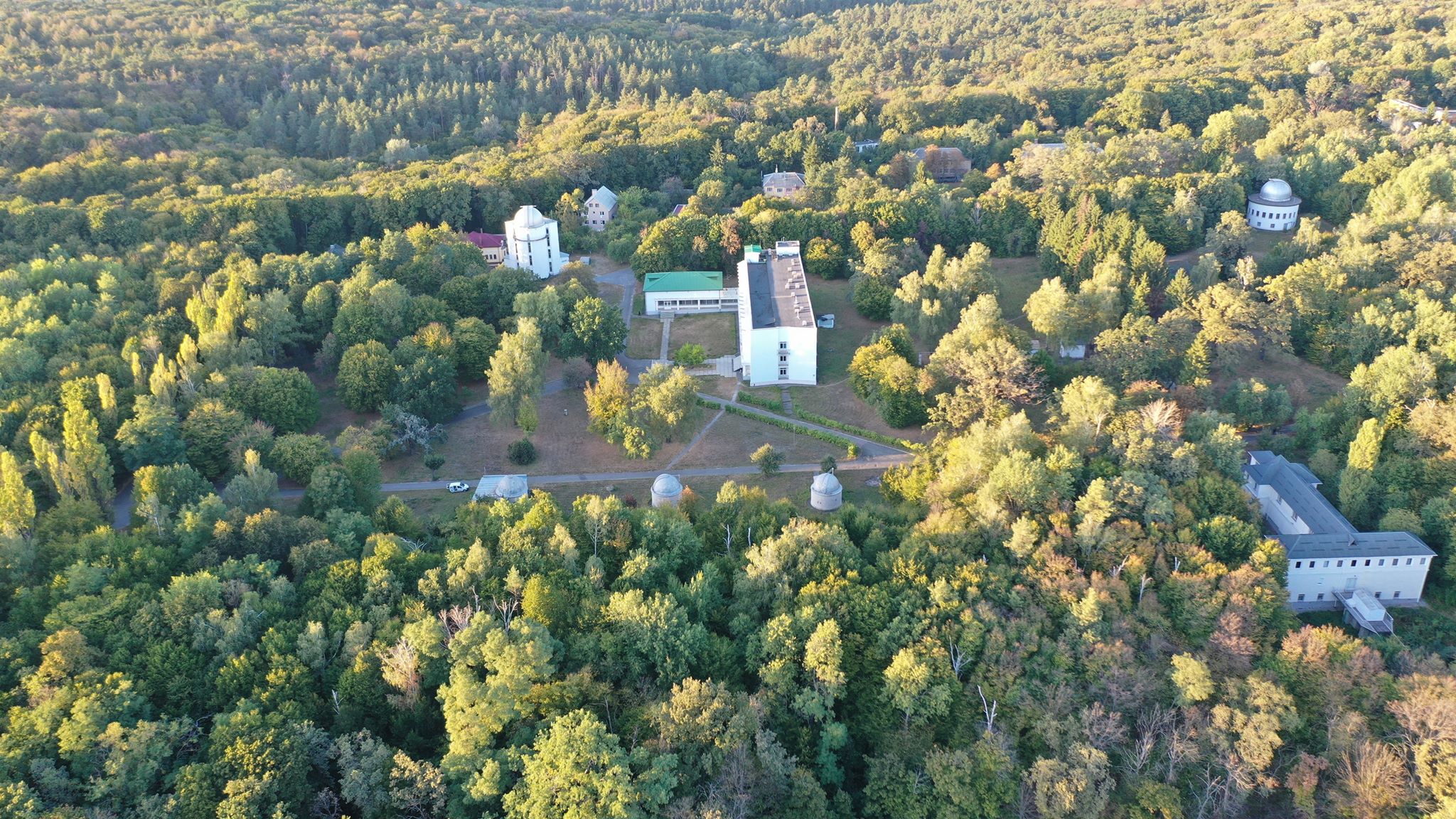AZT-2
The 70 cm reflector AZT-2
The first instrument for astrophysical purposes – the 70 cm reflector AZT-2 (D = 70 cm) – was mounted in 1959. Photometric, spectral, and polarimetric observations of the Solar System bodies and stars have been carried out with this telescope. Nowadays the reflector is also used for investigating and testing modern astrophysical techniques and equipment designed by the Observatory's engineers.
In 2008 special correction system of moving of the telescope was developed and tested for tracking of the unstable geostationary satellite, comets, and asteroids. The tracking system works in micro-step regime with a computer step of correction of 0.003 arcsec per second of time and a maximum speed of correction up to 4.6 arcsec per second of time. The step regulation is possible directly from the block of correction situated near the telescope. It is also possible to correct the moving of the telescope using the computer RS-485 interface in remote mode.
For testing of tracking the calculations of center photometric positions and fluctuations on X, Y coordinates of images of ARTEMIS satellite were performed. The results of calculations of unstable geostationary satellite images with an exposure of 5 second show that standard root mean square deviation along X coordinate is 0.65 arcsec and along Y coordinate is 0.4 arcsec for the set of images.
 |
| The 70 cm reflector AZT-2 |
 |
| The dome of the 70 cm reflector AZT-2 |



 COORDINATES
COORDINATES